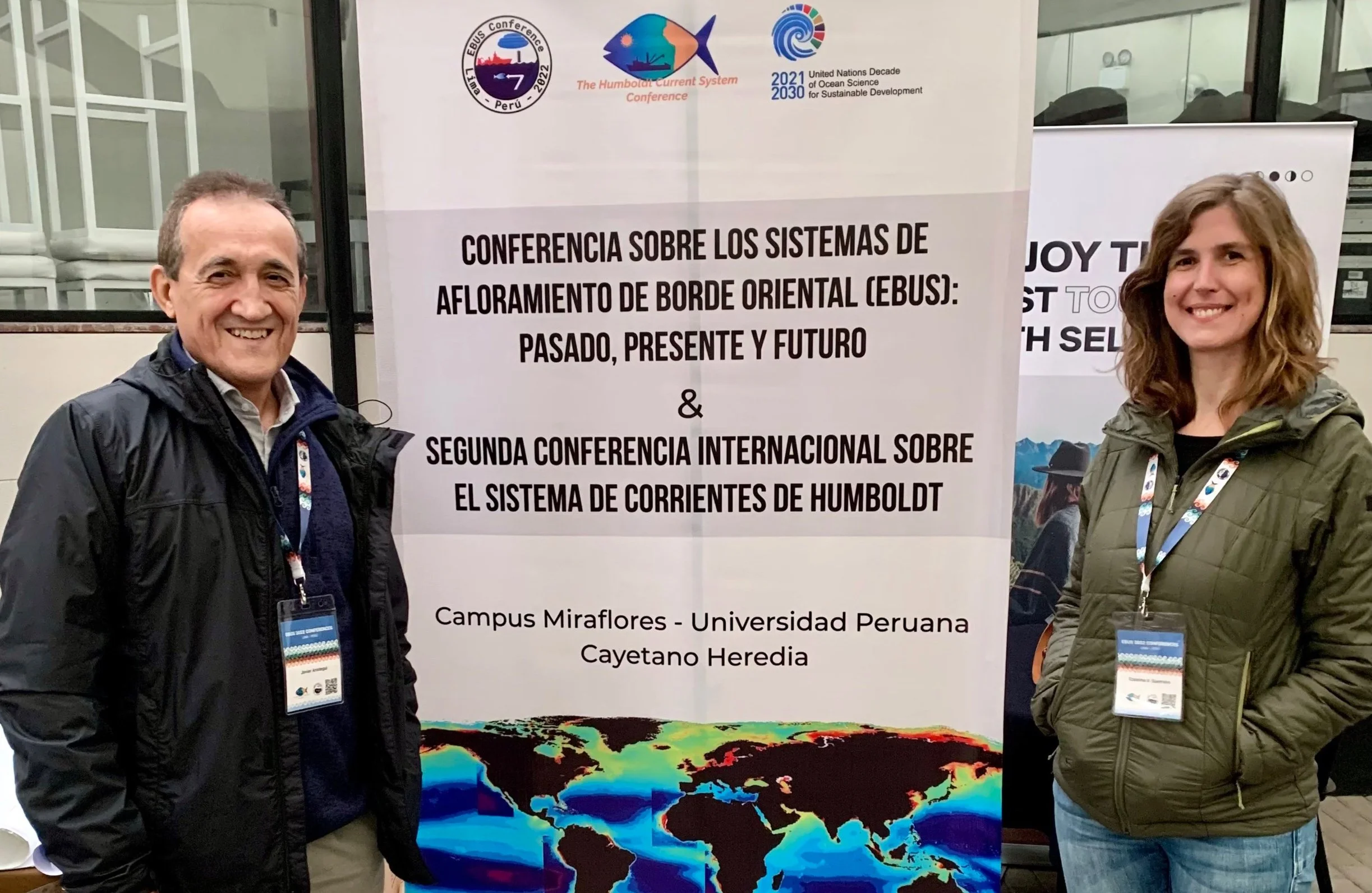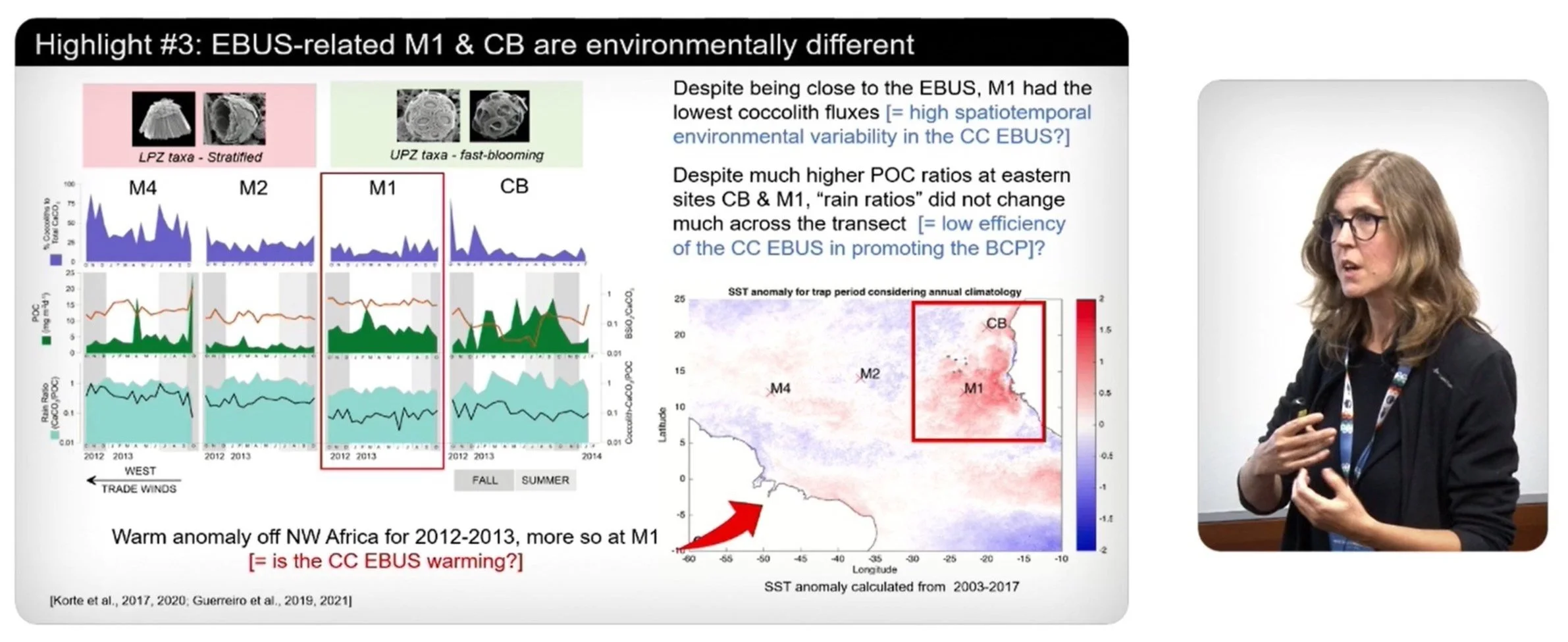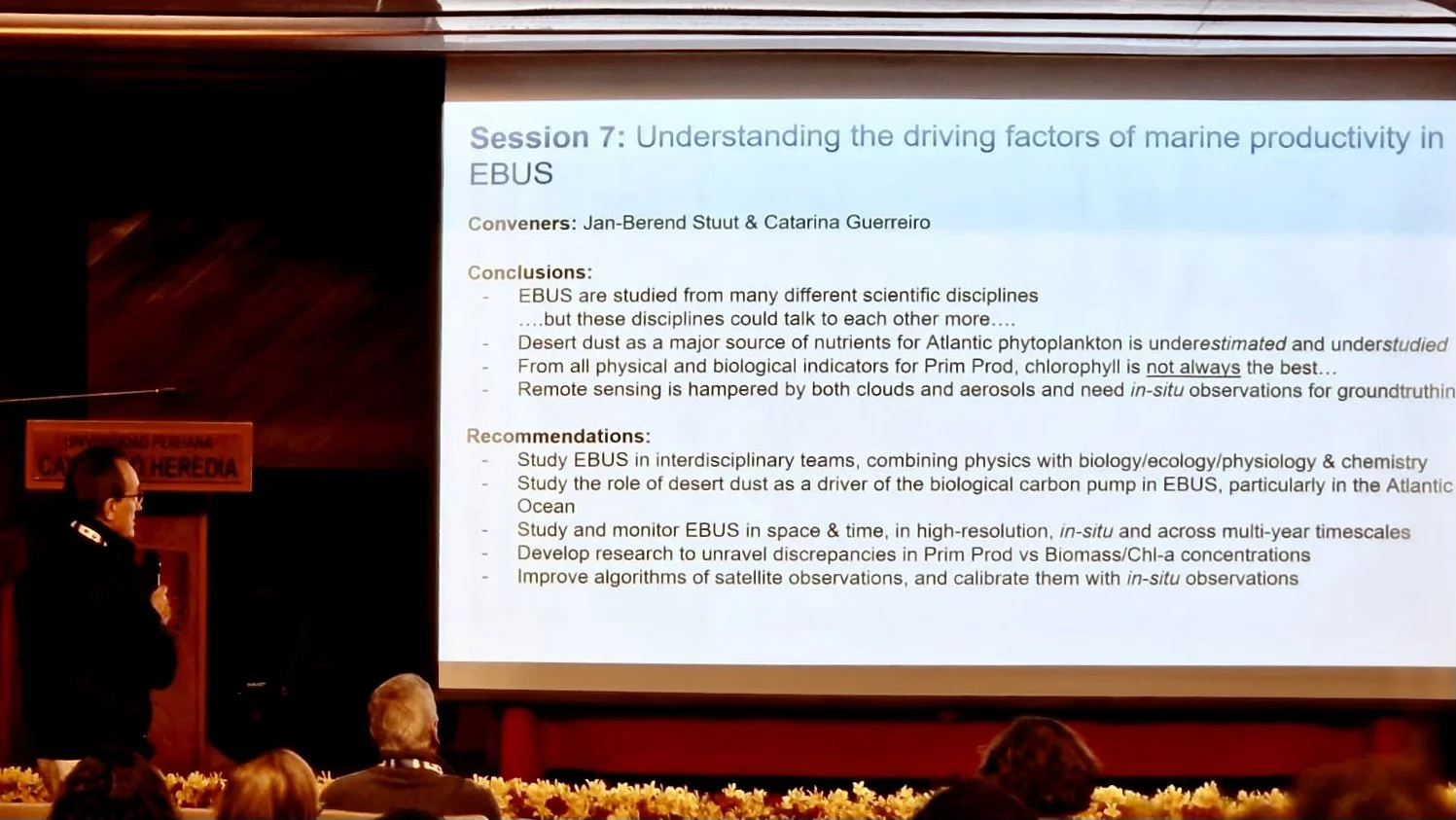After months of preparations, the Open Science Conference on EBUS: Past, Present and Future & Second International Conference on the Humboldt Current System was held in Lima, Peru, on 19-23 September 2022, gathering stakeholders and representatives of the interdisciplinary and multidisciplinary ocean and atmospheric science communities from all over the world. The programme of the conference was organised along three thematic axes, under the framework of the United Nations Decade of Ocean Science for Sustainable Development (2021-2030):
Ocean physics and associated biogeochemical processes in relation to climate variability and climate change.
Living resources, fisheries and adaptations to environmental variability.
Socio-ecological vulnerability to climate change and extreme events.
Dr. Catarina Guerreiro (MARE-FC.ID) presented her research at Session 7 (Axis 1) on “Understanding the driving factors of marine productivity in EBUS”, which she co-hosted with Prof. Jan-Berend Stuut (NIOZ senior researcher and member of ESA-DOMOS). Prof. Javier Arístegui (ULPGC) was the invited speaker of the session, with a talk titled “Mismatch between primary production, chlorophyll and nutrient availability in a Peruvian coastal upwelling: constraints for modelling primary production”, and he also presented PRIMUS to the international EBUS community.
Prof. Javier Arístegui (left) and Dr. Catarina Guerreiro (right) at the Open Science Conference on EBUS: Past, Present and Future & Second International Conference on the Humboldt Current System, held in Lima, Peru.
The conference's main lecture hall at the "Universidad Peruana Cayetano Heredia", in Lima, Peru (photo credits: Jan-Berend Stuut).
Prof. Javier Arístegui presenting project PRIMUS to the international scientific community (above), and Dr. Catarina Guerreiro (below) presenting her talk titled “Drivers of coccolithophore CaCO3 export production between NW Africa and the Caribbean: implications for the biological carbon pump”, including data from sediment traps M1 and CB addressed in PRIMUS Science Case 8.
After five days of intense scientific exchange of results and ideas, the participants gathered in the main lecture hall to outline the major conclusions and recommendations from each session, regarding the improvement of EBUS studies and management. Using in situ multi-proxy time-series data was referred as crucial to gain an integrated perspective on biogeochemical processes in EBUS and their seasonality, and to improve the accuracy of algorithms used by satellites to measure the colour of the ocean. During her presentation, Catarina Guerreiro also drew attention to the role of atmospheric dust deposition as a potential driver of the biological carbon pump in EBUS that are bordered by drylands and deserts (e.g., Canary, Benguela), in addition to wind-forced ocean circulation processes.
Prof. Javier Arístegui presenting the main conclusions and recommendations drawn from Session 7 (“Understanding the drivers of marine productivity in EBUS”) in the last day of the conference.




